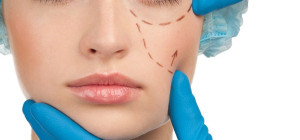For both men and women, the presence of facial hair can be a source of concern, affecting not only appearance but also confidence.
Personal grooming is more than just maintaining appearances; it’s a form of self-expression and self-care. Your grooming routine reflects your dedication to presenting the best version of yourself to the world. Facial hair plays a significant role in this equation.
Common Concerns About Facial Hair
Facial hair concerns are common among people of all genders. Some of the most prevalent concerns include:
- Unwanted Hair Growth: Unwanted facial hair can appear on the upper lip, chin, cheeks, and even the neck, causing distress and embarrassment.
- Ingrown Hairs: Improper hair removal techniques can lead to ingrown hairs, resulting in painful and unsightly bumps.
- Dark or Coarse Hair: Individuals with dark or coarse facial hair may find it more challenging to remove effectively.
Understanding Facial Hair Growth
Before diving into the various methods of facial hair removal, it’s essential to understand the dynamics of facial hair growth.
The Hair Growth Cycle
Hair growth occurs in distinct phases: the anagen (growth), catagen (transition), and telogen (rest) phases. Effective hair removal primarily targets the anagen phase, when the hair is actively growing.
Differences in Facial Hair Types
Facial hair isn’t one-size-fits-all. It can vary widely in texture, color, and density. Some individuals may have fine, light hair, while others may contend with coarse, dark strands. The type of facial hair you have can influence the choice of removal method that suits you best.
Factors Influencing Facial Hair Growth
Several factors can affect the rate and pattern of facial hair growth, including:
- Hormones: Hormonal changes during puberty, pregnancy, and menopause can influence facial hair growth.
- Genetics: Your family history plays a significant role in determining your hair growth patterns.
- Medical Conditions: Certain medical conditions, such as polycystic ovary syndrome (PCOS), can lead to abnormal facial hair growth.
Temporary Hair Removal Methods
When it comes to facial hair removal, there’s a wide array of methods to choose from. Here are some of the most common temporary hair removal techniques:
Shaving
Shaving is perhaps the most straightforward and accessible method. It involves using a razor to remove hair at the skin’s surface. While it’s quick and painless, regrowth is rapid, necessitating frequent maintenance.
Waxing
Waxing is a popular choice for individuals seeking longer-lasting results. It entails applying warm wax to the skin and then swiftly removing it along with the hair. The results last longer than shaving but may be accompanied by some discomfort during the process.
Tweezing
Tweezing is a manual method that involves plucking individual hairs with tweezers. It’s ideal for precision work in small areas and delivers long-lasting results.
Depilatory Creams
Depilatory creams contain chemicals that break down the hair’s structure, making it easy to wipe away. Ensure to select a product designed specifically for facial use to avoid skin irritation.
Threading
Threading is an ancient technique that employs a twisted thread to trap and remove hair. It offers precision and is effective for even fine facial hairs.
Semi-Permanent Hair Removal Methods
If you’re seeking more enduring solutions, semi-permanent methods might be the answer. These methods provide longer-lasting results compared to temporary ones. Here are some semi-permanent hair removal techniques:
Laser Hair Removal
Laser hair removal is a widely used method that utilizes concentrated light to damage hair follicles, reducing hair growth over time. Multiple sessions are usually required for significant and long-term results.
Electrolysis
Electrolysis is a permanent hair removal method that uses an electric current to destroy hair follicles. It’s effective for all hair types and colors but can be time-consuming.
IPL (Intense Pulsed Light) Treatments
IPL treatments use bursts of high-intensity light to target and damage hair follicles, reducing hair growth. They can be effective but may require multiple sessions for optimal results.
Permanent Hair Removal
Permanent hair removal methods offer the promise of long-term or even permanent hair reduction. Here, we’ll explore the benefits and considerations of these methods and compare two popular options: electrolysis and laser hair removal.
Benefits and Considerations of Permanent Methods
Permanent hair removal methods offer several advantages, including:
- Long-lasting results, potentially permanent
- Reduced regrowth over time
- Increased convenience due to fewer maintenance sessions
However, it’s essential to consider factors such as cost, discomfort, and the potential for side effects when opting for permanent methods.
Pros and Cons of Electrolysis vs. Laser Hair Removal
Both electrolysis and laser hair removal are effective permanent hair removal options, but they have distinct characteristics:
- Electrolysis: This method is time-consuming and may require multiple sessions, making it suitable for small areas like eyebrows or upper lips.
- Laser Hair Removal: Laser hair removal is relatively quicker and can treat larger areas like the legs or back efficiently. However, multiple sessions are still needed for lasting results.
Choosing the Right Method for You
With a plethora of facial hair removal options available, choosing the right method can be challenging. Consider the following factors to make an informed decision:
Skin Type Considerations
Your skin type can impact the effectiveness and safety of different hair removal methods. Some methods may be better suited for individuals with specific skin types.
Pain Tolerance
Consider your pain tolerance when choosing a method. Some techniques, such as waxing or threading, can be more uncomfortable than others.
Budget and Long-term Costs
Evaluate the long-term costs associated with your chosen method. Some methods require ongoing expenses, while others offer more cost-effective solutions in the long run.
Preparation and Aftercare
For a successful and comfortable hair removal experience, proper preparation and aftercare are essential.
Proper Skincare Before Hair Removal
Before hair removal, it’s crucial to prepare your skin. Here’s a checklist:
- Cleanse your skin to remove dirt, oil, and makeup.
- Exfoliate gently to prevent ingrown hairs.
- Avoid sun exposure before treatments, as tanned skin can be more sensitive.
Post-Hair Removal Care to Prevent Irritation and Ingrown Hairs
After hair removal, it’s essential to take care of your skin to minimize irritation and the risk of ingrown hairs:
- Apply a soothing, alcohol-free moisturizer to hydrate the skin.
- Avoid hot showers, saunas, or intense exercise immediately after hair removal.
- Exfoliate regularly to prevent ingrown hairs.
Professional vs. DIY Hair Removal
When it comes to facial hair removal, you have the option to go professional or opt for DIY methods. Let’s explore the advantages of both approaches:
Advantages of Professional Treatments
Professional hair removal treatments, such as those offered by licensed estheticians or dermatologists, come with several benefits:
- Expertise and experience
- Advanced equipment and technology
- Tailored treatment plans
- Reduced risk of errors or complications
DIY Methods for Convenience
On the other hand, DIY hair removal methods are convenient and accessible. They allow you to manage your grooming routine on your terms, without scheduling appointments or visiting a salon.
Safety and Side Effects
Safety should always be a priority when it comes to facial hair removal. Different methods come with varying degrees of risk and potential side effects.
Potential Risks and Side Effects of Different Methods
It’s essential to be aware of the potential risks and side effects associated with each hair removal method:
- Shaving: Risk of nicks, cuts, and razor burn.
- Waxing: Possible skin irritation, redness, or ingrown hairs.
- Tweezing: Risk of ingrown hairs and pain during plucking.
- Depilatory Creams: Skin sensitivity and potential allergic reactions.
- Threading: Possible discomfort during threading.
- Laser Hair Removal: Temporary redness, swelling, or pigmentation changes.
- Electrolysis: Temporary redness, swelling, or scabbing at treatment sites.
- IPL Treatments: Potential discomfort and skin changes post-treatment.
How to Minimize Risks and Discomfort
To minimize the risks and discomfort associated with hair removal, follow these guidelines:
- Follow the manufacturer’s instructions for at-home products.
- Ensure your skin is clean and dry before treatment.
- Perform a patch test if you have sensitive skin or are using a new product.
- Avoid sun exposure before and after hair removal treatments.
- Moisturize and protect your skin with sunscreen.
Managing Facial Hair in Different Skin Tones
People with various skin tones may have unique considerations when it comes to facial hair removal. Here are some special considerations:
Special Considerations for People with Darker Skin Tones
Individuals with darker skin tones may be more prone to certain side effects, such as hyperpigmentation, when using hair removal methods like laser or waxing. It’s essential to choose methods and products specifically suited for your skin type and consult with a dermatologist if needed.
Facial Hair Removal for Men
Facial hair removal is not limited to women. Men also seek grooming solutions, whether it’s maintaining a well-groomed beard or removing unwanted hair. Here are some considerations for men:
Grooming Tips for Men
For men, grooming often involves maintaining well-defined facial hair, whether it’s a beard, mustache, or clean-shaven look. Proper grooming techniques and tools are essential to achieve the desired results.
Different Facial Hair Removal Approaches for Men
Men may require different approaches to facial hair removal based on their grooming preferences. These approaches can range from traditional shaving to advanced treatments like laser hair removal.
Common Myths and Misconceptions
Myths and misconceptions surround the world of hair removal. Let’s debunk some of the most common ones:
- Hair Grows Back Thicker After Shaving: Shaving doesn’t alter the thickness or color of hair; it simply removes the tapered ends, making it appear thicker initially.
- Waxing Is Painless: Waxing can be painful, especially if you’re new to the method. The discomfort lessens with repeated treatments.
- Laser Hair Removal Is Permanent After One Session: Laser hair removal requires multiple sessions to achieve lasting results, as it targets hair in the anagen phase of growth.
- Hair Removal Creams Are Suitable for All Skin Types: Depilatory creams can cause skin irritation in some individuals, especially those with sensitive skin.
Cultural and Social Perspectives
Cultural and social perspectives on facial hair can vary widely. Different cultures and societies have their own norms and expectations regarding facial hair grooming. Understanding these perspectives can help individuals make choices that align with their cultural values and personal preferences.
Your Personal Journey to Hair-Free Skin
The journey to hair-free skin is a personal one. It involves choices, trial and error, and finding what works best for you. Remember that there is no one-size-fits-all solution when it comes to facial hair removal. Embrace your unique path and the confidence that comes with looking and feeling your best.







